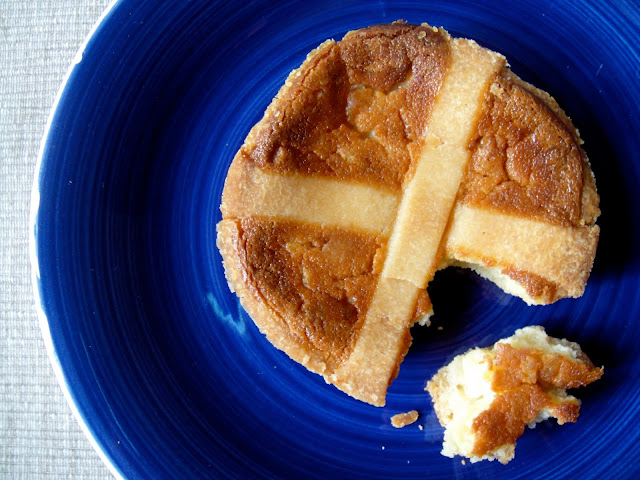The names and their unique pronunciation may differ, but they all speak of the same spiky leaved delight. Cime di rapa is a vegetable related to both the broccoli and turnip family, has 6" to 9" stalks and sometimes scattered clusters of tiny broccoli-like buds. There may also be small yellow flowers blooming from the buds, which are edible. Overseas they can be associated with turnip greens, and a valid substitute is dandelion greens. It's best to just eat the florets and leaves of the cime di rapa since the stems are quite bitter.
We Italians are particularly fond of cime di rapa, and cook it in a variety of ways including stir-frying, steaming and braising.
Cime di rapa and broccoli Rabe are sometimes confused with one another, and although interchangeable, they are two different things. The former identifies with turnip tops (no florets or buds but maybe a more intense broccoli Rabe type taste) and the latter is the true broccoli cousin. In Bari if you order orechette with cime di rapa you will get whichever is in season. Cime di rapa are the main ingredient for this spectacular and authentic orecchiette recipe from Puglia.
Orecchiette are a type of homemade pasta native to these lands, whose shape resembles a small ear. In Italian, "ear" is orecchio, so the pasta name translates to "little ears".
500 g (1.1 lb) orecchiette
1 kg (2.2 lbs) cime di rapa (turnip tops, broccolini, or broccoli raab)
3 garlic cloves, minced
1 small peperoncino, crushed
3 oil-preserved anchovy fillets (crushed and reduced to a paste)
Extra virgin olive oil
Pecorino Romano, grated
Wash the greens in plenty cold water and a fistful of baking soda to remove any field dust, soil, chemicals and unwanted pesticides. Rinse well several times and separate the flowers (if any) from the leaves and tender stalks.
Bring a large pot of salted water to a boil.
In a large skillet, heat some olive oil, adding the garlic, peperoncino and the anchovy, stirring a bit to further crush all with a wooden spoon. Add only the cime di rapa flowers and sauté for a few minutes until they begin to wilt.
Toss the green leaves and stalks in the water and boil for 7-8 minutes. Drain, set aside and continue boiling the cooking water. Boil the orecchiette in the same water and when the orecchiette are al dente, drain and toss everything – cooked orecchiette and greens – in the skillet with the sautéed flowers. Mix well to blend with indispensable swooping handle motion, dust with the grated cheese and dive in, head first.
500 g (1.1 lb) orecchiette
1 kg (2.2 lbs) cime di rapa (turnip tops, broccolini, or broccoli raab)
3 garlic cloves, minced
1 small peperoncino, crushed
3 oil-preserved anchovy fillets (crushed and reduced to a paste)
Extra virgin olive oil
Pecorino Romano, grated
Wash the greens in plenty cold water and a fistful of baking soda to remove any field dust, soil, chemicals and unwanted pesticides. Rinse well several times and separate the flowers (if any) from the leaves and tender stalks.
Bring a large pot of salted water to a boil.
In a large skillet, heat some olive oil, adding the garlic, peperoncino and the anchovy, stirring a bit to further crush all with a wooden spoon. Add only the cime di rapa flowers and sauté for a few minutes until they begin to wilt.
Toss the green leaves and stalks in the water and boil for 7-8 minutes. Drain, set aside and continue boiling the cooking water. Boil the orecchiette in the same water and when the orecchiette are al dente, drain and toss everything – cooked orecchiette and greens – in the skillet with the sautéed flowers. Mix well to blend with indispensable swooping handle motion, dust with the grated cheese and dive in, head first.























